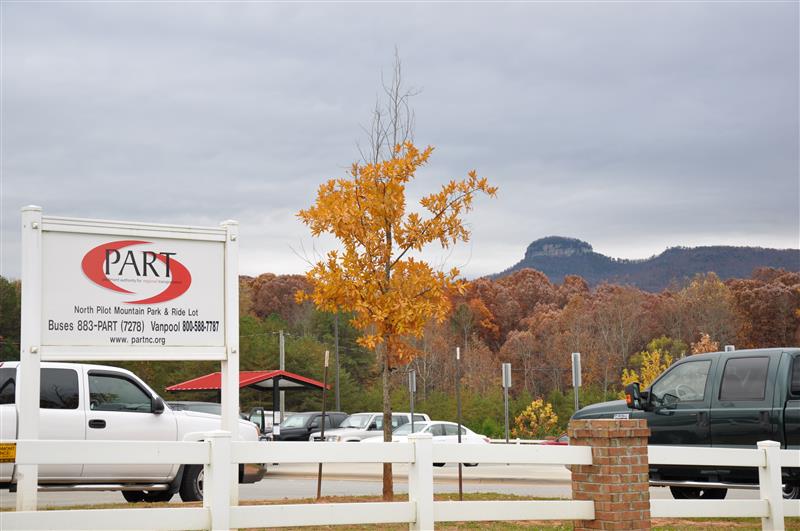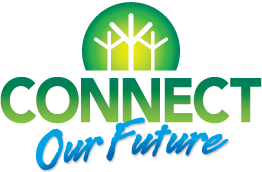For planning purposes, the U.S. Department of Transportation defines rural as anything outside of a metropolitan area with a population of 50,000 or greater. By this definition, and according to reports by the US Department of Transportation (DOT) Rural Program and the National Association of Development Organizations (NADO), rural America comprises more than 80 percent of the nation's land; more than one third of its population; and more than two-thirds of the country’s approximately 3,000 counties. The demographics, mobility needs and resources of rural areas are vastly different than those of urban areas. And despite being served by MPOs, much of the CONNECT region is more “rural” or suburban in feel and development pattern than urban.
A rural transportation system serves those areas identified as rural, and includes all passenger transportation options available other than driving alone. This includes rural transit, demand responsive transit for the elderly and disabled, passenger rail, intercity bus, ferries, commercial scheduled air service, and car and van pooling. Passenger transportation in rural areas is provided by a variety of private sector, not-for-profit organizations, and various public agencies.
Why is this important to your community?
Many of the CONNECT region’s counties remain predominantly rural or large-lot suburban. These areas are characterized by a pattern of large lots, abundant open space and a high degree of separation between residential structures, resulting in transportation challenges for residents who do not have access to a private automobile, or would like to use public transportation for commute and other daily needs.
Nearly 40 percent of the region’s transit-dependent population, including seniors, low-income populations, and persons with disabilities, reside in the region’s rural areas. To this population, rural transportation can provide much-needed access to medical care, social services and essential shopping. It can also improve quality of life by improve access to family, friends and recreation, and advance economy opportunity by facilitating access to jobs and education. For these reasons, it’s important to identify, develop, operate, and/or support rural transportation options that address the priority needs of rural residents, and that also build stronger rural communities.
Public transportation enables reduced traffic, emissions caused by vehicle use, and a reprieve from driving for those wishing to reduce the stress of driving. Rural Transportation System offers these solutions to those living outside of an urban context, thus further improving air quality and the quality of life of regions.
Skip directly to
How Does It Work?
Resources
Using the Tool
Partners
Where Has It Worked?
Where is it appropriate to use?
What priorities does it address?
What other tools are related?
How does it work?
Institutional arrangements and transportation issues in rural areas can be very different than in urban areas. In urban areas, a Metropolitan Planning Organizations (MPO) typically is responsible for planning, whereas in rural areas, Rural Planning Organizations (RPOs) (in NC) or the COGs (in SC) perform those functions. Operations of rural transportation systems also varies: in North Carolina, about a quarter of the state’s 100 counties have rural transportation provided by a regional system, however, the majority of counties only offer transit systems within their county only. In South Carolina, the Department of Transportation’s Office of Public Transit plans, programs, and administers the provisions of rural and urban transit systems, and services for seniors and individuals with disabilities in partnership with the federal government and local communities.
The primary type of rural transportation is public transit. In rural areas, public transit services are provided primarily to transit-dependent groups such as the elderly and disabled. Some regional benefit from general public access services for which patrons may call ahead, and there are even some fixed rural routes offered by providers of demand-response service in the CONNECT region. Currently, the CONNECT region is served by several Express inter-city buses and some smaller intra-city bus systems, which provide coverage in parts of the region, as do vanpools. The CONNECT region is also served by the newly-established Centralina Volunteer Transportation Service, which connects volunteers with riders in need in Lincoln County. This service hopes to expand to additional counties in the region.
Vanpooling is another workable and cost-effective option for rural transportation. It currently is offered in the CONNECT region on an as-requested basis by the Charlotte Area Transit System (CATS), and its use could be expanded. Currently, no rural portions of the CONNECT region are served by commuter rail or bus rapid transit (BRT)—the other two transit modes appropriate for less-urban areas.
Funding is a major hurdle in expanding rural transportation routes. Typically, fees for providing transportation services do not cover all costs, and they are supported in part by federal transit operating funds. As service is expanded, operating costs increase, creating a shortage of funds. With 51% of the CONNECT region workforce commuting out-of-county, expanding service is difficult as needs are spread, which also heightens the need of those living in rural areas. With current patterns, it is harder for family members to take older members to doctors’ appointments, increasing the need for demand response services such as ACTS and SCUSA. Single-vehicle community is also increasingly burdensome as gas prices increase, increasing the potential demand for express bus or other transit services.
Ready to get started?
Using the Tool
- Establish the vision, mission, and goals of the rural transportation operation. To do this, include key stakeholders (including transportation providers), diverse interest groups, subject matter experts, and others who represent various facets of the local community in a working group that may become the nucleus of an ongoing advisory committee. It is also important to incorporate the vision of the broader community into the transit vision, and to coordinate with the RPO or MPO and the COG, for broader regional context and to begin making the connection to funding sources.
- Define the boundaries of the target area (single-county or multicounty). Prepare a snapshot (existing conditions analysis) of the area, and identify challenges (e.g., jurisdictional), barriers (e.g., geographic), and opportunities (including current proposals for service as reflected in existing transportation and community plans). When drafting a description of the service area, tap into community and regional resources to provide valuable information on geography, demographics, and the local economy. The target area snapshot can be used:
- To aid in the production of meaningful service area maps.
- As a resource for demographic information and population projections.
- To determine local transit attractors.
- To provide information on how large employers impact transit service provision.
- Use existing, accurate population projections to anticipate future demand, and review current municipal, county and/or regional plans. Determine if you need additional demographic projections or breakdowns of adopted county-level projections.
- Prepare a service assessment and plan. The service assessment provides guidance on reviewing and assessing existing transit services. In the CONNECT region, this would involve an evaluation of the Charlotte Area CATS Express service, which currently provides 19 express routes throughout the region in addition to its urban service. The goal of a transit service assessment is to:
- Provide and understand characteristics of modes, types, trip purposes, and location.
- Determine where new services may be needed or where underutilized service may be reconfigured or resources redirected to serve market demand.
- Aid and improve the decision making process to meet the mission, goals, and objectives of the transit agency(ies).
- Develop a transit cost assessment. This tool provides a means of determining current expense levels by function and service type and a basis for projecting future service costs. The assessment serves as a framework for reporting expenses (costs) to ensure accuracy of data and to understand and manage transit program costs.
- Conduct a transit funding assessment to determine current funding level needs and establish a basis for a five-year funding plan. Because rural transit providers receive funding from a variety of sources (including Federal, state, local governments, health and human service agencies, and other public and private entities), providing coordinated transportation in rural communities can maximize the use of resources to provide cost effective transportation.
- Identify peers, and collect data for peer reviews and benchmarking as a means to determine levels of performance as the service becomes operational. Benchmarking can be used to identify gaps in the transit agency processes and can aid in improving overall performance.
- Develop the five-year financial plan. The five-year plan should provide a financially sustainable future. The projected year service levels, costs, funding, and fleet replacement plan are the basis for the five-year plan. The plan also serves as a unique report that documents current operations and financial status and identifies future system needs and community values.
- Establish reliable, coordinated information resources (i.e. call center, website, information and resource referral service)
- Promote the service among potential riders and build relationships between the transit agency and human service agency services.
- Utilize software applications to assist with trip scheduling and system planning. GIS mapping (routes / customers / type of needs, etc.)
Partners
- Advocacy Groups
- Community Service Providers
- Elected Officials
- Farmers / Agricultural Extension Office
- Health Care Providers
Where has it worked?
TriCounty Link - Berkeley, Charleston, and Dorchester Counties, SC
 Image Source: Tri-County Link.
Image Source: Tri-County Link.
Contact
Ronald E. Mitchum, Director
843-899-4096
ron.mitchum@ridetricountylink.comAbout the Program
The TriCounty Link system is comprised of 9 regular fixed routes and 4 commuter routes that provide services to rural residents of Berkeley, Charleston and Dorchester counties. The system also includes Medicaid transport, adult daycare transportation and other various contracts with private companies.
While each of the nine fixed routes follows a published schedule, each route also includes a route deviation option. The driver may go off the fixed route up to one-quarter mile to pick up customers that cannot meet the bus at designated stop locations. We are also a “flag-stop” system and will pick up customers between the scheduled stops along each of the fixed routes. Fixed-route fare-paying passengers are required to pay the standard fare for each trip.
Why it works
In 1996, Berkeley, Charleston and Dorchester Counties agreed to invest in the cost for the startup of a rural transit service for the residents of the region. The Berkeley, Charleston, Dorchester Rural Transportation Management Authority (BCD-RTMA) was created to operate this service. The BCD-RTMA service was implemented to provide a home-to-work option for rural residents with an investment of just $30,000 per year per county. The funding from the three counties was programmed to last only three years, after which BCD-RTMA must becoming self-sufficient. Over the past thirteen years the BCD-RTMA has succeeded in becoming independent through various service changes and by providing contract service to several agencies throughout the region. Until the half-cent sales tax was approved in Charleston County, the BCD-RTMA had not received additional funding from any of the counties in the region.
In late 2007, BCD-RTMA changed its name for visibility and ease, as well as to more accurately reflect the reality of growing from a single-county service to a tri-county service. That same year, TriCounty Link management approached the Charleston Area Regional Transportation Authority (CARTA) board of directors and requested approval of a transfer agreement that would allow customers to pay one fare each way when transferring between the rural and urban transportation systems. The transfer agreement was implemented in January 2007 and has been very successful. TriCounty Link celebrated its 13th birthday in July 2009.
Piedmont Authority for Regional Transportation - Greensboro, NC
 Image Source: Piedmont Authority for Regional Transportation.
Image Source: Piedmont Authority for Regional Transportation.
Contact
Mark Kirstner, Director of Planning
336-662-0002
markk@partnc.orgAbout the Program
Piedmont Authority for Regional Transportation (PART) is a regional organization focused on enhancing transportation options through the regional cooperation of the 10-county Piedmont Triad region. PART offers forms of mass transportation aimed at connecting key destinations through the region that are not already served by local transportation authorities. Its primary hub is based adjacent to the Piedmont Triad International Airport, located between Greensboro and High Point. Trips originating from this hub offer free connections to the Winston-Salem, Greensboro, or High Point local bus systems via PART Express Buses. PART additionally provides service to Duke and UNC Medical Centers via Connections Express buses. PART also has Express Bus service to outlying counties that surround the Triad including Surry, Stokes, Davidson, Yadkin, and Randolph Counties and soon to be Davie County. PART is also administering and developing several rail service studies that include the expansion of both commuter and intercity rail. PART is able to connect gaps in the transit systems provided by local transportation authorities such as WSTA, Hi-Tran, GTA, and HEAT, making regional connections, and the thriving of a regional economy, possible.
Why it works
PART is successful because of the collaboration and support of the regional agencies, including NCDOT, MPOS, local DOTs and County administrators. The PART staff continually works with local citizens, businesses and the Board of County Commissioners to understand unmet needs for the traveling public, as well as the economic benefits to keep services well-funded, encourage ridership, and connect key destinations. PART looks at all elements of transportation across the region, providing not only Express buses, but rural shuttles, a Vanpool/Carpool, shuttles to job centers, such as the Airport Area business park, and administers a Transportation Demand Management (TDM) program, which received National Honors from the Southeastern Chapter of the Commuter Transportation Association at their Annual Conference. In FY2014, PART’s work enabled the reduction of over 20 million vehicle miles traveled and improved air quality by reducing over 50 tons of NOx emissions. PART continually encourages increased ridership through programs such as National Dump the Pump Day, offering a fare-free transit day. The fare-free day resulted in a 32.3% increase in ridership for the day.
PART is supported by ongoing coordinated land use and transportation planning taking place at the regional level. In 2014, the regional land use and transportation planning project, “Piedmont Together” was completed and has brought multiple levels of coordinated and cooperative planning initiates to the forefront, including jobs, demographics, green infrastructure, housing, food or transportation. The initiative brought citizens, governments, businesses and special interest groups together. PART also worked with each individual MPO and RPO to adopt PART’s long range transportation plan “Piedmont Triad Regional Transit Vision for 2025,” so that the strategies and recommendations of this plan became incorporated into the long range transportation plans of each respective organization, so that each would be coordinated in planning for the future. PART continually seeks state and local funding to expand programs and service.
PART customers have also been a driving force behind the program’s success. 2012 marked the 10th anniversary of PART Express services. During that time, PART ridership grew from 30,642 to 475,481, and routes increased from three to twelve. Despite two fare increases and substantial cuts in service due to funding reduction, service ridership has remained very strong.
- Community Service Providers


